James Lee Byars was an American conceptual artist and performance artist specializing in installations and sculptures, as well as a self-considered mystic. He was best known for his use of personal esoteric motifs, and his creative persona that has been described as 'half dandified trickster and half minimalist seer'.

Angela Bulloch, is an artist who often works with sound and installation; she is recognised as one of the Young British Artists. Bulloch lives and works in Berlin.

Eberhard Bosslet is a German contemporary artist who has been producing site-specific art and architectural-related works, such as sculpture, installation, light art and painting, all indoors and outdoors, since 1979. Born in Speyer, Germany, and living in Berlin and Dresden, he co-founded the artist group, "Material & Effect" in Berlin in 1981, and since 1980, has been the co-director of the artistspace "MOPEDS" in Berlin/Kreuzberg that is involved in curating and managing non-conventional artshows.
Michael Buthe was a German artist who lived and worked between Germany and Morocco. He exhibited widely throughout Europe during his life and is known for his eclectic and prolific oeuvre which encompasses painting, sculpture, and installation.
Bethan Huws is a Welsh multi-media artist whose work explores place, identity, and translation, often using architecture and text. Her work has been described as "delicate, unobtrusive interventions into architectural spaces".
Leiko Ikemura is a Japanese-Swiss painter and sculptor.
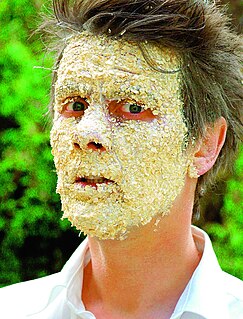
John Bock is a German artist. He studied in Hamburg, Germany and lives and works in Berlin.
Valérie Favre is a Berlin-based artist. Since 2006 she is Professor of painting at the Universität der Künste in Berlin.
Penelope Judith Millar is a New Zealand artist, who lives in Auckland, New Zealand and Berlin, Germany.
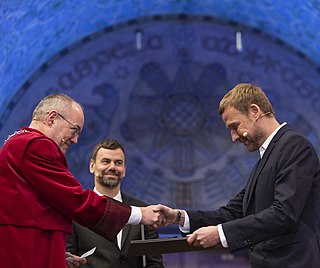
Michael Elmgreen and Ingar Dragset have worked together as an artist duo since 1995. Their work explores the relationship between art, architecture and design.
A K Dolven is a Norwegian artist. She works across painting, film, sound, sculpture and interventions in public space.
Tea Jorjadze Thea Djordjadze is a contemporary artist based in Berlin, Germany. She is best known for sculpture and installation art, but also works in a variety of other media.
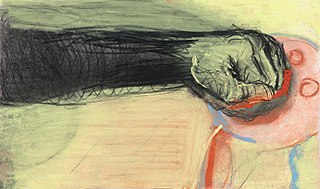
Miriam Cahn is a Swiss painter.
Karin Sander is a German conceptual artist. She lives and works in Berlin and Zurich.
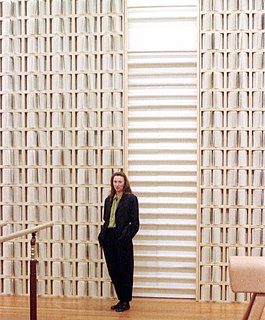
Svetlana Kopystiansky is an American artist, active in New York City since 1988. She has a multimedia practice, including painting, photography, film, and video, with an investigation of language as her primary paradigm. On works in media of film and video, she collaborates with her husband Igor Kopystiansky. Her independent works and their joint works are shown internationally and held in museum and private collections around the world.

Rita McBride is an American artist and sculptor. She is based in Los Angeles and Düsseldorf. Alongside her artistic practice, McBride is a professor at the Kunstakademie Düsseldorf, and served as its director until 2017. McBride is married to Glen Rubsamen, an American painter from Los Angeles.
Thomas Kovachevich is an American contemporary visual artist and physician. Kovachevich's art practice is multi-faceted; exhibitions of paintings, sculptures, installations and performances have represented the lexicon of this artist.
Norbert Prangenberg was an abstract painter, sculptor, and engraver who was born in Nettseheim, just outside of Cologne, Germany. Though he had no formal training and did not fully engage with art until his 30s, Prangenberg did finally come up with a style that was uniquely his own, not fitting comfortably into the neo-expressionist or neo-geo movements of his time, in the 1970s and 1980s. At this time, he was considered a major figure in contemporary German art. Though he got his start with abstract paintings, he also became known for making sculptures of all sizes; and while his work initially appears abstract, the titles given sometimes allude to the human body or a landscape. As a trained gold- and silversmith, as well as a glassblower, he always showed an attention to materials and how they could be physically engaged with. He was interested in how his own two hands could affect the painting or sculpture's surface. Traces of the artist's hand appear literally throughout his entire oeuvre, before he lost the battle with liver cancer in 2012.
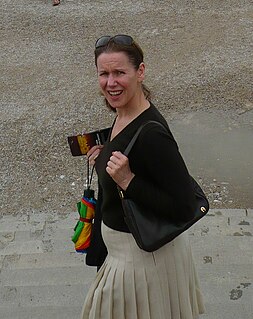
Wiebke Siem is a German mixed media artist of German and Polish heritage, winner of the prestigious Goslarer Kaiserring in 2014 as "one of the most innovative and original artists who has never compromised in their art and whose sculptures have a tremendous aura and presence because they mix the familiar and the unfamiliar, the known and the unknown".
Guillaume Leblon is a French sculptor and visual artist. He lives and works in New York City.








